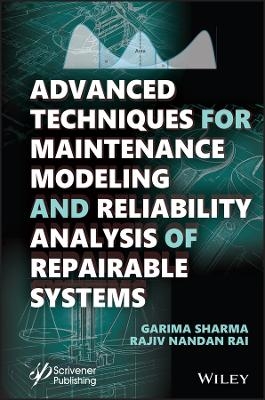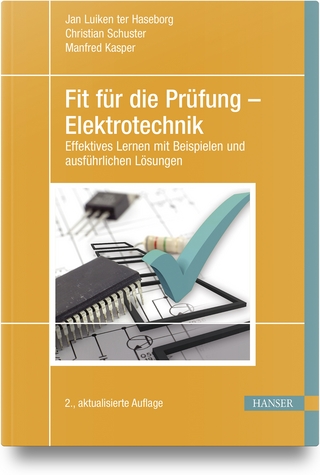
Advanced Techniques for Maintenance Modeling and Reliability Analysis of Repairable Systems
Wiley-Scrivener (Verlag)
978-1-394-17443-0 (ISBN)
- Titel ist leider vergriffen;
keine Neuauflage - Artikel merken
The content presented in this book is inspired by the existing limitations of the generalized renewal process (GRP) model and the problems confronted by the maintenance, repair, and operations (MRO) facilities in industries dealing with large and complex repairable systems. Through this book, the authors have attempted to equip the MRO facilities with more advanced scientific tools and techniques by addressing various limitations related to the reliability analysis of repairable systems. The book is dedicated to various imperfect maintenance-based virtual age models and methodologies to bridge various research gaps present in the available literature. A summary of deliverables is as follows:
Presents the basic concepts of maintenance and provides a virtual age model that can accommodate all maintenance;
Provides the basic concepts of censoring in repairable systems along with the concept of black box and failure modes. Also highlighted is how the proposed work will be useful for industries conducting failure modes and effect analysis (FMEA) and estimating the mean residual life (MRL) of repairable systems;
Presents methodology that applies risk-based threshold on intensity function and provides a threshold to declare the system/component as high failure rate components (HFRCs);
Identifying a system as HFRCs is an important task, but for an industry dealing with critical systems, preventing the system from being HFRC is more important, since the risk involved in such systems would be very high. Thus, the book presents a progressive maintenance policy (PMP) for repairable systems;
Focusses on qualitative analysis of repair quality. Assuming repair quality as a subjective variable, the authors have presented various factors that affect the repair quality most and modeled their interdependency using Bayesian networks (BN).
Audience
Professional reliability engineers, reliability administrators, consultants, managers, and post-graduate students in engineering schools. The book belongs to any engineering, technical, and academic institution concerned with manufacturing, production, aviation, defense, and software industries.
Garima Sharma, PhD, completed her doctorate at Subir Chowdhury School of Quality and Reliability, Indian Institute of Technology Kharagpur, West Bengal, India. Her research interests include aerospace reliability and maintenance engineering, reliability, and risk analysis of reentry space vehicles. She has authored 10+ journal publications (SCI and Scopus indexed) including three international conferences and two book chapters. Rajiv Nandan Rai, PhD, is an accomplished engineer with over 28 years of experience in the field of reliability, quality, and maintenance engineering with an industrial experience of 23 years in the Indian Air Force, in which he has worked at all levels of maintenance, repair, and overhaul of aircraft, aero engines, and their components. He is currently an assistant professor at Subir Chowdhury School of Quality and Reliability, Indian Institute of Technology Kharagpur. He has authored 30 publications (SCI and Scopus indexed) including one book and four book chapters. His research interests include reliability analysis of repairable systems, maintenance engineering, quality management and engineering, machine diagnostics, and prognostics.
List of Figures ix
List of Tables xiii
Preface xv
1 Maintenance, Repair, and Overhaul: A Preview 1
1.1 Introduction 1
1.2 Maintenance 3
1.3 Repair 23
1.4 Overhaul 29
1.5 Chapter Summary 34
References 34
2 Repairable Systems: An Overview 37
2.1 Introduction to Repairable Systems and Its Terminologies 38
2.2 Maintenance Actions on Repairable Systems 44
2.3 Classifications of Maintenance Categories 46
2.4 Concept of Censoring 56
2.5 Problems Faced by the Industries: Present Scenario 57
2.6 Chapter Summary 61
References 61
3 Imperfect Overhaul Virtual Age Model 65
3.1 Introduction 65
3.2 Need for an Imperfect Overhaul 66
3.3 Imperfect Overhaul Virtual Age Model (IOVAM) 68
3.4 Chapter Summary 78
References 80
4 Techniques for Modeling and Analysis of Censored Data Considering the FM Approach 81
4.1 Introduction 81
4.2 Problem Background 83
4.3 Basic Terminologies 84
4.4 Representation and Analysis of Cases 86
4.5 Models for FM-Wise Censored Data Analysis for Repairable Systems 90
4.6 An Industrial Perspective of Technique 98
4.7 Chapter Summary 106
References 108
5 Methodology for Identifying HFRCs Considering Risk-Based Threshold on Intensity Function 111
5.1 Introduction 111
5.2 Methodology for Risk-Based Threshold on Intensity Function for HFRC Designation 113
5.3 Chapter Summary 125
References 127
6 Progressive Maintenance Policy 129
6.1 Introduction 129
6.2 Progressive Maintenance Policy (PMP) 130
6.3 PMP Methodology 130
6.4 Chapter Summary 139
References 139
7 Age-Based Maintenance Policies for Repairable Systems 141
7.1 Introduction 141
7.2 Age-Based Policies for Repairable Systems 141
7.3 Chapter Summary 149
References 150
8 Study and Modeling of Factors Affecting the REI of Repairable Systems 151
8.1 Introduction 151
8.2 Limitations of the Quantitative Assessment of RE 152
8.3 Investigation of Factor/Subfactors Affecting RE 154
8.4 Tool Chosen for the Analysis 159
8.5 Chapter Summary 169
References 170
Appendix A 171
Appendix B 173
Appendix C 175
Appendix D 177
Appendix E 183
Index 193
| Erscheinungsdatum | 18.10.2023 |
|---|---|
| Sprache | englisch |
| Gewicht | 631 g |
| Themenwelt | Technik ► Elektrotechnik / Energietechnik |
| ISBN-10 | 1-394-17443-8 / 1394174438 |
| ISBN-13 | 978-1-394-17443-0 / 9781394174430 |
| Zustand | Neuware |
| Haben Sie eine Frage zum Produkt? |
aus dem Bereich


